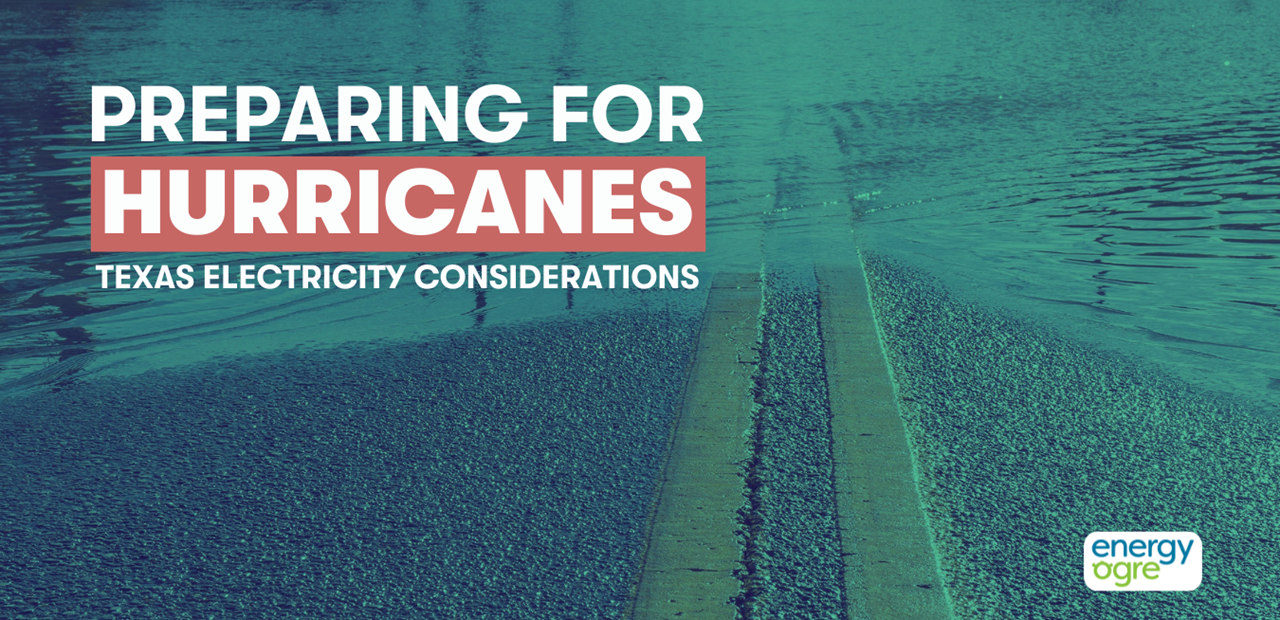
Texas Electricity Bill Guide: How to Read & Calculate Your Energy Bill
We all pay electricity bills, but has anyone taught us how to read an electric bill? It'd be nice if your electricity bill explained things like, what are TDSP delivery charges or what the utility charges on electric bills are for. Well, good news! We’re doing an electric bill breakdown so you can understand exactly how to read it and what the charges mean.
Table of contents:
- How to Read Your Electricity Bill
- Electricity Account Number & Customer Information
- Electricity Consumption & Meter Charges
- Energy Charge Summary: How Your Electricity Bill is Calculated

How to Read Your Electricity Bill
Before trying to calculate any costs, let’s first show how to read your electric bill. As you see in the example bill above, there are four major sections: Account details, plan details, electricity consumption, and your charge summary. No matter who your electricity provider is, these four things will likely be on every bill. And once you know what to look for each month, it becomes a lot easier to understand the electric bill breakdown. So, without further ado, we figured the best way to have your electricity bill explained was with a few examples!
Reliant Energy Example Bill

On this bill you’ll see the account details at the top left with your name and address. To the top right, you’ve got a charge summary reminding you of your billing period, as well as amounts due. Below that, you’ll also see the kWh rate for your energy charge, as well as the pay period, and utility provider. The bottom left shows your electricity consumption (with a convenient comparison chart!), and the bottom right defines your plan details.
Green Mountain Energy Example Bill

For Green Mountain Energy bills your account details are right at the top left with your name, address, and account number. Your electricity consumption is over to the right, along with your billing period, and your partial charge summary can be found at the top and the bottom. There isn’t a charge summary with itemized details of charges and rates, although that might be on the next page. Notice anything else missing? This bill does not lay out any of your plan details. While there is account information on the top left, it’s not the full plan information as it doesn’t show things like the contract end date. This is one part of electric bill breakdown that may differ across electric companies, but having the plan name, length of contract, and utility provider readily accessible is not only convenient for customers, it's a clearer way to see how the monthly total was calculated.
TXU Energy Electricity Example Bill
.png)
You’ll see the same is true for TXU—plan details aren’t easily accessed on the bill. Plan details and a charge summary likely to only be found on the second page, if you’re willing to look. Perhaps there is an expectation that you know your plan’s length, kWh rate, and utility charge, but really dissecting the bill can be tough. It could make it more difficult for consumers to fully understand how their electricity bill is calculated.
Now that you’ve seen examples of what can be expected, let’s go into a little more detail on each section.
Electricity Account Number & Customer Information
Most of the time, the account details include more than just your name and address. For example, what is an ESI ID? Let’s break it down.
Number
If you pay for electricity, you’ll have an account number on every invoice. This is how your electricity provider can look up your account info, plan details, address and more. Not to mention, this number is often used as your customer ID for your provider regarding all billing and customer support.
Address
This is a bit of a no-brainer, but the service address on your bill should be the address of whatever location you’re trying to power.
ESI ID Number
This acronym stands for "Electric Service Identifier" because it uniquely identifies your home address by a particular number. Think of the ESID, also sometimes referred to as ESI ID, as your address on the Texas electricity grid. Unlike your meter number, your ESID will most likely remain the same. So, if you’ve ever wondered where is the ESI ID number on your meter—it’s not. It’s only on your bill.
Electricity Plan Details & Energy Service Providers
This section should ideally be on every electricity bill. As shown in the examples above, that’s not always the case—but below you’ll see why each part is integral to understanding your electric bill.
Plan Name
Having this on every bill reminds you which plan you enrolled in (and who your retail electricity provider is). Not to mention, the electricity provider sometimes attaches your contract length to the back of the plan. For example, the plan could be listed as "Texas Power Saver 12" or "Green Texas 9." In the example, 12 and 9 signify respective 12 and 9-month plans, so you know at a glance how long your current rate will last.
Expiration Date
The date listed is the final day of your current contract. This date is critical because it identifies when you need to shop for your next plan -- unless you're with Energy Ogre. Our members don’t have to be as focused on this date because we begin shopping for their next contract 30-45 days before their contract ends—and we make sure you’re getting the lowest energy rate available in your area.
TDSP Contact Information
Having the name and number of your Transmission and Distribution Service Provider (TDSP) may not seem necessary, but in the event of a power outage, your TDSP is who you’d need to call. Luckily, most delivery companies are available 24/7 so you always have someone to call in an emergency.
Electricity Consumption & Meter Charges
For most of us, this is the most important part of every electricity bill. It shows your electricity base charge, how much electricity you’re using each month in kilowatt hours, and it helps breakdown how to understand electricity rates (so you know exactly what you’re paying for).
Meter Number
This number is the identification number attached to your home's meter, so think of it as the serial number for the hardware. Over time, if your meter breaks or has issues, the meter number will change as a new meter is installed.
Service Dates
Each billing period typically lasts around 30 days, so having the start and end date on each bill just gives you more insight into how much you’re being charged for the month. Once you have a few electricity bills to reference, the service dates can be easy reference points when comparing what times of year you’re spending more.
Previous & Current Reads
These numbers basically show you what your meter reading was at the end of the last month versus where it is now (in kilowatt hours). Most electric companies do not reset the meter in between readings so to keep track of your monthly usage, simply subtract the previous reading to the current reading.
Meter Multiplier
Sometimes current transformers (CTs) or potential transformers (PTs) are used to step down the current/voltage in a metering circuit to safer levels. If that’s the case with your home’s meter, then there’s an extra step in figuring out how to calculate your electricity bill total from your meter reading: watthour meter multipliers.
Let's use an example to explain how to use a meter multiplier. Say your meter has a CT ratio of 200:5. This means 200 amps are flowing through the primary side of the current transformer while 5 amps are coming out of the secondary side. In this case, the meter multiplier is 40, which is simply 200/5.
What if your meter has both a CT and a PT ratio? If a service has both CT’s and PT’s then the two values are multiplied together to give the billing multiplier. For example, if a service has 200:5 CT’s and 2.4:1 PT’s, the multiplier will be 96. This is because 40 x 2.4 = 96.
You would take your meter multiplier and (you guessed it!) multiply it by the difference between your current reading and your previous reading. Most residential properties will not require CTs or PTs, so your meter multiplier will often show up as “1” on your electricity bill.
Usage (kWh)
This amount represents the "kilowatt-hours" of electricity you’ve used over the past month, and it’s often the most important figure (aside from the total) on your bill. To get an idea of your base charge for electricity, you’ll need to know your effective rate rather than just the energy charge (or your plan’s rate). The effective rate includes your energy rate, TDSP charges and various fees. Let’s use our bill example from the very top of this page:
The bill balance was $81.88, and the billed kWh usage was 782. Divide the balance by the usage, and you'll get your effective rate.
$81.88 / 782 = 10.4 | Therefore, the energy charge is only $0.0537, but the effective rate (total price per kWh including all charges) is actually $0.104 or 10.4¢
Energy Charge Summary: How Your Electricity Bill is Calculated
Do you ever feel like your electricity bill total is much higher than you thought? How are electricity bills even calculated? What are these TDSP delivery charges? Why is there a base charge for electricity? What are the TDU charges on your electric bill? We’re defining every possible fee you see on your bill so you can know exactly what you’re being charged for.
Energy Charge
This charge is based on the electric energy (kWh) you consumed over the month.
TDU Meter Charge
Your Transmission and Distribution Utility (TDU) company is responsible for delivering electricity to your meter—and while the delivery has its own fee (see below), the TDU meter charge is simply for metering a customer's consumption approved by the Public Utility Commission.
TDU Delivery Charge
This is the infamous charge that covers the cost of moving electricity from the generation plant to your home. This, in combination with the meter charge, accounts for all TDU charges on electric bills.
Tax
The sales tax is collected by authorized taxing authorities, such as the state, cities, and special purpose districts.
PUC Assessment
This fee recovers the statutory fee for administering the Public Utility Regulatory Act. Luckily, this is a very minimal charge every month.
Gross Receipts Reimbursement
This fee recovers any miscellaneous gross receipts tax imposed on retail electric providers operating in an incorporated city or town having a population of more than 1000. Chances are you’ll be subjected to these.
Total Charges
Aside from the kWh usage amount, this is obviously the most important number on your monthly bill. This figure is the total sum of all fees listed above—and what you owe to your provider.
Energy Ogre Does the Hard Work
Countless consumers don't know how much they pay each month, and they also have no idea how much they are paying per kilowatt-hour (kWh). In essence, the kWh, in addition to a few other charges, determines how much you owe the electricity provider you buy from.
With that said, it's likely the average consumer doesn't understand how to read their electricity bill charges correctly, but we’re hoping our electric bill breakdown makes you feel a little more confident. But, if all this adding, comparing, and researching has you feeling overwhelmed—leave it to the experts. With Energy Ogre, you always know that you're getting a straightforward electricity plan at a fair price. And we back our service with a 100% satisfaction guarantee. You’ll never have to wonder “why is my electric bill so high?” again.
Simplify & Save On Your Electricity


 EST. 2013
EST. 2013


-(1).png)

